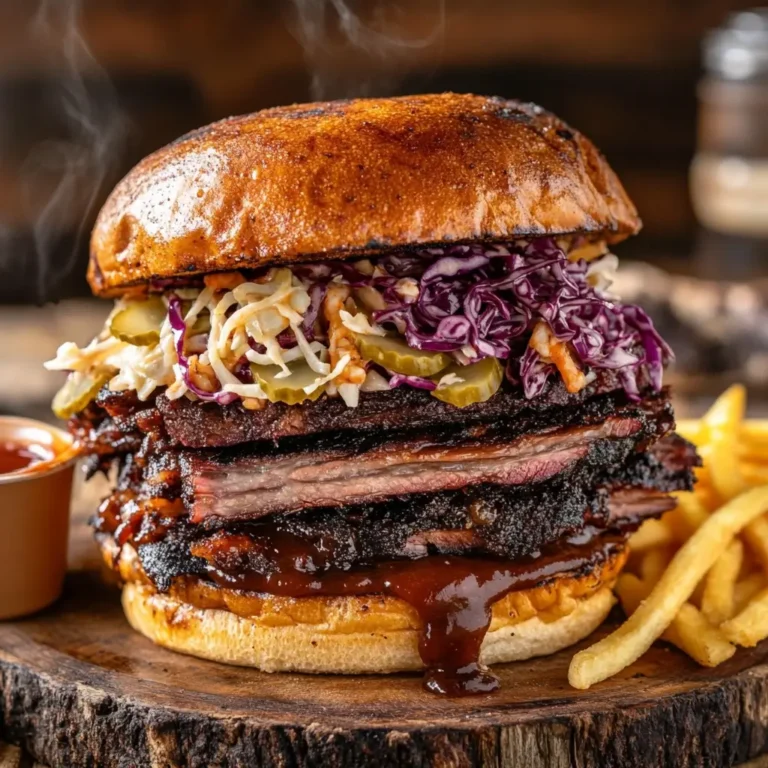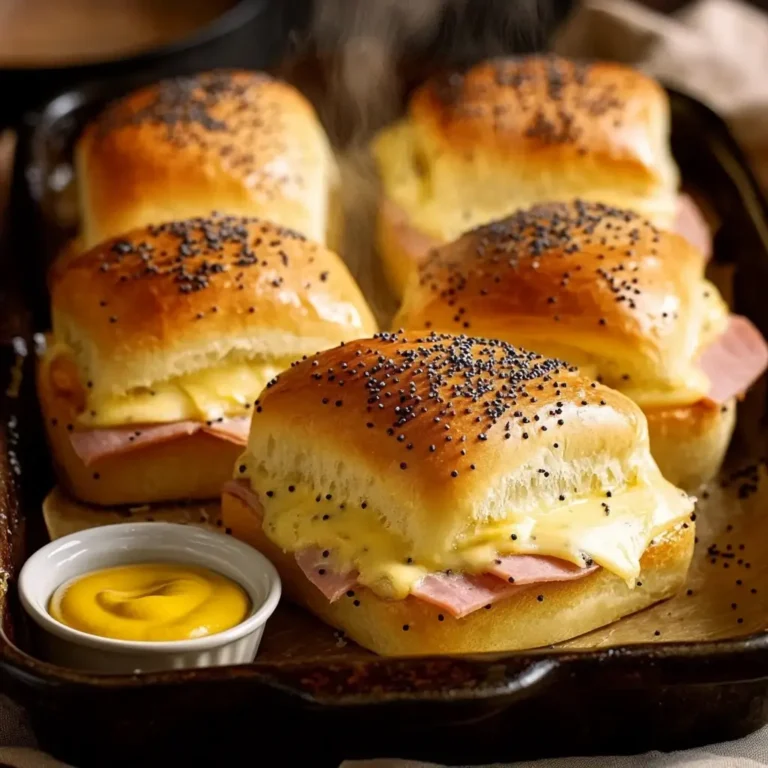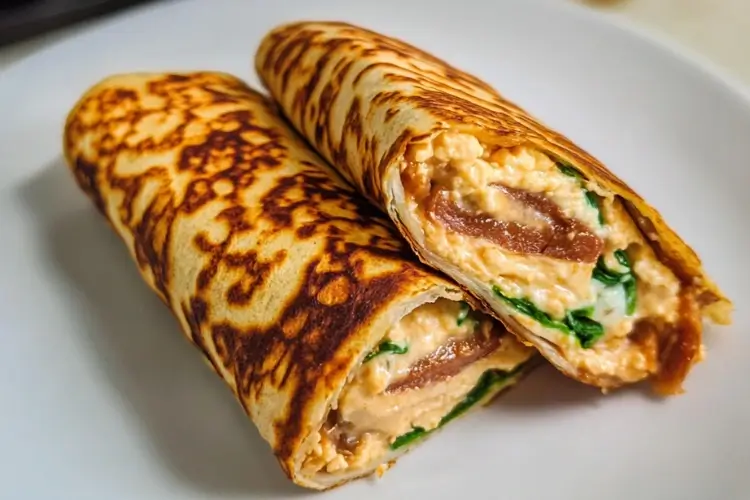How to Make a Chicken Parmesan Sandwich
Table of Contents
Making a chicken parmesan sandwich at home is a mix of comfort food and Italian-American tradition. This guide will show you how to make the best chicken parmesan sandwich. You’ll learn about crispy chicken, perfect layering, balancing flavors, choosing ingredients, and avoiding mistakes.
Key Takeaways
- Use thin, even chicken cutlets for even cooking.
- Marinara sauce adds authentic Italian-American flavor.
- Choose a sturdy roll to hold all ingredients.
- Cheese selection impacts melt and texture.
- Frying or baking lets you customize the recipe.
What Makes the Perfect Chicken Parmesan Sandwich
Creating a memorable chicken parmesan sandwich or chicken parmesan sub starts with understanding its roots and core elements. This dish blends Italian tradition with American comfort food. But what makes it go from good to great? Let’s break it down.
The Origin of the Chicken Parm Sub
The chicken parmesan sub comes from Italian-American cuisine. It started with eggplant parmigiana. But immigrants in the U.S. changed it by using breaded chicken instead.
Today, it’s a favorite in diners and home kitchens. Its soul is in the balance of flavors and textures.
Key Elements of an Authentic Chicken Parmesan Sandwich
- Crispy golden breading with no soggy spots
- Smooth marinara sauce, not too thick or thin
- Melty cheese that oozes without overpowering
Why Homemade Is Better Than Takeout
Making your own lets you pick fresh ingredients. Restaurants often use frozen chicken or store-bought sauce. But at home, you can choose artisan bread and layer ingredients to taste.
By avoiding preservatives, you get a sandwich that’s fresher and customizable. It’s bursting with flavor.
Essential Ingredients for Your Chicken Parmesan Sandwich
Creating a chicken marinara sandwich or chicken parm sub recipe requires the right ingredients. Each part adds to the sandwich’s taste and texture. Here’s what you need:
- Chicken: Choose boneless, skinless breasts for even cooking. Look for tender, evenly thick cuts.
- Breading: Panko breadcrumbs make it crispy, while Italian-seasoned ones add flavor. Mix with salt and pepper for seasoning.
- Cheeses: Fresh mozzarella melts well, and shredded provolone adds tang. Grated Parmesan boosts umami flavor.
- Sauce: Use fresh marinara sauce with crushed tomatoes, garlic, and basil. Store-bought brands like Rao’s are good if you can’t make your own.
- Herbs: Fresh basil adds brightness. Dried oregano or parsley can be used but use half the amount for more flavor.
- Bread: A sturdy Italian sub roll keeps everything inside. Choose a crusty loaf like a hero roll for the best balance.
Quality matters: Use fresh garlic, ripe tomatoes, and high-fat mozzarella (like part-skim for the chicken marinara sandwich). Avoid pre-shredded cheese to skip anti-caking agents. Pair ingredients wisely—sharp provolone melts smoother than cheddar. A good marinara sauce and crispy breading make a big difference.
Equipment You’ll Need
Getting ready for the best chicken parmesan sandwich means having the right tools. The right equipment makes every step, from pounding chicken to serving, go smoothly. Here’s what you need:
Kitchen Tools
- A meat mallet or rolling pin to thin chicken breasts evenly
- Two shallow bowls for egg wash and breadcrumbs
- A slotted spoon to drain fried chicken
- Sharp kitchen shears for cutting herbs or trimming meat
Cooking Surfaces
- A heavy skillet (like cast iron) for crisp frying
- Baking sheet with rack for oven-baked alternatives
- Heat-safe spatula to flip chicken without breaking it
Serving Essentials
- Wide, sturdy plates to hold the sandwich intact
- Aluminum foil or parchment for keeping ingredients warm
- A serrated knife for cleanly slicing the sub roll
Having these items ready before you start makes your chicken parm sub recipe go faster. Good tools, like a nonstick skillet or a heavy-duty mallet, improve texture and look. With the right equipment, your meal will be a hit from start to finish.
Preparing the Chicken Cutlets
Perfect chicken cutlets are key for a great chicken parmesan sandwich or chicken parmesan sub. Start by slicing boneless, skinless chicken breasts in half to make ½-inch thick cutlets. Use a meat mallet on a cutting board to gently pound them, focusing on the thicker edges. This makes them cook evenly and stay tender.
Pounding and Tenderizing Techniques
Place each breast between two sheets of plastic wrap to prevent tearing. Pound in circular motions, working from the center outward. Don’t over-pound, as it can make the meat tough. A uniform thickness means no dry spots in your chicken parmesan sub.
Breading Process
Follow this three-step method for maximum crispiness:
- Flour Dredge: Toss cutlets in seasoned flour to absorb moisture.
- Egg Wash: Dip in beaten eggs mixed with a splash of milk for adhesion.
- Breadcrumb Coat: Press into a mix of panko and Italian-seasoned breadcrumbs for flavor and crunch.
Tips for Perfectly Crispy Chicken
- Let breaded cutlets rest 10 minutes in the fridge—this firms up the coating.
- Cook in 350°F oil for golden-brown results. Use a thermometer to avoid soggy breading.
- Pat chicken dry with paper towels before dredging to enhance crispiness.
Mastering these steps creates cutlets that stay crisp even after assembling your chicken parmesan sandwich. This ensures every bite is perfect.
Making the Marinara Sauce
The chicken marinara sandwich needs a sauce that’s bold yet balanced. Start with crushed tomatoes, especially San Marzano ones. Heat olive oil in a pot, then sauté minced garlic and onion until they’re soft.
Add tomatoes, a pinch of sugar to balance acidity, and fresh basil. Let it simmer for 20–30 minutes for a richer flavor. Or, use a 15-minute quick version with jarred sauce as a base.
- Quick method: Mix store-bought marinara with balsamic vinegar and minced garlic.
- Slow method: Simmer crushed tomatoes, herbs, and a bay leaf for 30 minutes.
Adjust the sauce’s thickness by adding tomato paste or water. Season with salt, red pepper flakes, or lemon juice. For the chicken parm sub recipe, the sauce should stick to the chicken but not overwhelm the bread.
“A good marinara is like a hug—it warms without overwhelming,” says Chef Maria Lopez of New York’s Parm Palace. “Let fresh basil finish it; it’s your sauce’s final breath of freshness.”
Store-bought sauces can also work. Add diced sun-dried tomato or a dash of Worcestershire sauce for more flavor. Simmer for 10 minutes after mixing to blend the flavors. Let the sauce cool before using it in your sandwich.
The Best Bread for Chicken Parmesan Subs
Choosing the right bread makes a chicken parmesan sub truly special. It should be both sturdy and flavorful, without getting soggy. Let’s explore the best options and techniques for a crisp, satisfying bite.
Italian Rolls vs. French Bread
Italian rolls are perfect for their balance of crunch and softness. Brands like La Brea or Bakery on Demand have sturdy exteriors that hold cheese and sauce well. French bread, while classic, can get soggy if too full. Choose a roll that’s about ½-inch thick to avoid tearing.
Toasting Methods
Pre-toasting bread helps keep it dry. Here are a couple of ways to do it:
- Butter-toasting: Brush the cut sides with melted butter and grill until golden.
- Broiler trick: Place bread 4 inches under a preheated broiler for 2-3 minutes.
Both methods keep the bread crispy without drying it out.
Gluten-Free Alternatives
Gluten-free rolls from Schar or Udi’s are now great alternatives. Look for brands with xanthan gum for a chewy texture. Toast these just like regular bread to keep them from getting soggy. Use less sauce to maintain the texture.
Assembling Your Chicken Marinara Sandwich
Building your chicken parmesan sandwich is all about layering. Each step is key to keeping it crispy, flavorful, and sturdy. Follow these tips to prevent soggy bread and enhance taste.
Layering Order for Maximum Flavor
- Start with a thin layer of marinara sauce on the bottom bun. This sets the flavor base without making it too wet.
- Put your crispy chicken cutlet on top. Make sure it covers the whole area for even flavor.
- Drizzle more sauce over the chicken for extra taste. But don’t overdo it.
- Add cheese next. This way, it melts right onto the chicken when it’s cooked.
- Finish with the top bun. Don’t press down to keep the layers intact.
Cheese Selection and Melting Techniques
Choose mozzarella for a gooey touch or provolone for a tangy twist. For a deeper flavor, sprinkle parmesan over the chicken before adding the top bun. Here’s how to melt cheese just right:
- Broil the sandwich in the oven for 2-3 minutes until it’s bubbly.
- Use a salamander tool for a professional browning on top.
Pro tip: Add roasted red peppers or fresh basil between layers. They add freshness without overpowering the sandwich’s main flavors.
Cooking Methods: Baked vs. Fried Chicken for Your Sandwich
When making your chicken parm sub recipe, the cooking method matters. You can choose fried for a crispy texture or baked for a lighter option. Both ways can make a delicious best chicken parmesan sandwich. It just depends on what you prefer.
| Method | Pros | Cons | Tips |
|---|---|---|---|
| Fried | Golden crust, restaurant-style crunch | Higher calories, splatter cleanup | Use a cast-iron skillet at 350°F. Drain on a wire rack to avoid sogginess. |
| Baked | Less oil, even cooking | Less crunch without a broiler | Preheat to 425°F. Flip halfway for even browning. |
Try a mix of both: pan-fry breaded chicken in a nonstick skillet, then bake at 375°F for 12-15 minutes. This way, you get both crispiness and health benefits. Use parchment paper or cooking spray to make cleanup easier.
- For fried: Opt for peanut oil—it has a high smoke point.
- Baking? Try coating chicken in crushed cornflakes for extra texture.
Choose your method wisely. A golden crust is key to keeping the bread crisp. Adjust cooking time if using thick cutlets. Your best chicken parmesan sandwich begins with a well-cooked base, whether baked or fried!
Sides That Complement Your Chicken Parmesan Sandwich
Choosing the right sides can make your chicken parmesan sandwich or sub even better. These options add flavor and balance out the meal. They mix fresh or crunchy textures with the sandwich’s richness.
Traditional Italian Pairings
Italian sides match the sandwich’s heritage. Try:
- Antipasto salad with marinated veggies and olives, dressed in red wine vinaigrette.
- Garlic knots baked until crispy, great for dipping in marinara sauce.
- Roasted veggies like zucchini or eggplant, seasoned with rosemary and Parmesan.
These choices bring tangy, savory, or earthy flavors. They contrast with the sandwich’s creamy cheeses and bread.
Quick and Easy Side Options
For busy weeknights, simple sides are best. Consider:
- Prepasted salad kits (like mixed greens or Caesar) with balsamic dressing.
- Frozen garlic bread—just pop it in the oven and sprinkle with Parmesan.
- Store-bought coleslaw or caprese salad for a light, fresh contrast.
Even seasoned fries can be a quick, crispy option. Just keep portions small to let the sandwich be the star.
To balance the meal, add a green salad or roasted veggies. They help offset the sandwich’s richness. Try different combinations to find your favorite!
Storage and Reheating Tips
Keep your homemade chicken marinara sandwich fresh by storing ingredients right. Keep each part separate to maintain texture and flavor. Here’s how to keep your dish at its best:
Keeping Components Separate
- Chicken: Store baked or fried chicken in an airtight container. Avoid stacking to prevent sogginess.
- Sauce: Refrigerate leftover marinara in a glass jar. Shake before using.
- Bread: Wrap rolls loosely in parchment paper to retain softness.
- Cheese: Refrigerate shredded cheese in a sealed bag with the air squeezed out.
Best Practices for Leftovers
Eat your chicken parm sub recipe within 3 days for the best taste. Reheat it using these steps:
- Preheat oven to 350°F (175°C).
- Place chicken on a baking sheet, tent with foil to avoid drying.
- Warm for 10-15 minutes until heated through.
Freezing Instructions
Freeze each part separately for long-term storage:
- Wrap chicken tightly in parchment and foil, then place in a freezer-safe bag.
- Label containers with dates and contents.
- Thaw frozen sauce overnight in the fridge before reheating.
Follow these tips to keep your homemade chicken marinara sandwich tasty, whether you eat it fresh or later. Always use airtight containers and label them properly for safe meal prep.
Conclusion: Mastering the Art of Homemade Chicken Parmesan Sandwiches
Your journey to the best chicken parmesan sandwich starts with precision. You need perfectly breaded chicken, simmered marinara, and a sturdy roll. When you layer these elements, you get a sandwich that’s more than a meal—it’s a celebration of flavors.
Homemade versions let you control every detail. From the crunch of the breading to the melted cheese’s gooey center. It’s all up to you.
Try adding spicy pepperoncini or a drizzle of agave-glazed balsamic. These touches honor the dish’s Italian-American roots while making it uniquely yours. Choose between a toasted ciabatta or a classic Italian sub roll. Every choice makes a difference in the final bite.
Mastering the chicken parmesan sandwich is a skill that grows with practice. Share your creations at family gatherings or refine them into a go-to recipe. Each time you assemble it, you’re carrying forward a culinary tradition.
This dish isn’t just food—it’s a gateway to confident cooking and shared enjoyment. It proves homemade versions far surpass takeout.
FAQ
What is a chicken parmesan sub?
A chicken parmesan sub, also known as a chicken parm sub, is a sandwich. It has breaded and fried chicken cutlets, marinara sauce, and melted cheese. It’s served in a soft sub or baguette. This Italian-American classic is loved for its rich flavors and satisfying texture.
How can I make a chicken parmesan sub recipe at home?
To make a chicken parmesan sub at home, start by preparing breaded chicken cutlets. Cook them until they’re golden brown. Then, layer them in your bread of choice with marinara sauce and cheese.
Before baking or broiling, the cheese will melt. This DIY approach lets you customize flavors and fillings for a top-notch sandwich.
Can I use store-bought marinara sauce for my chicken marinara sandwich?
Yes, using store-bought marinara sauce is easy. But, adding fresh herbs, sautéed onions, or garlic can make it taste more homemade. This will enhance your chicken marinara sandwich.
What type of cheese works best for a chicken parmesan sandwich?
Mozzarella cheese is traditional because it melts well. But, you can also use provolone or grated parmesan for more flavor. Mixing different cheeses can make your sandwich even tastier.
Are there healthy alternatives for making a chicken parmesan sandwich?
Absolutely! Baking the chicken cutlets instead of frying them can cut calories and fat. Using whole-grain bread or gluten-free alternatives makes your sandwich healthier without losing flavor.
What type of bread is best for chicken parmesan subs?
Italian rolls or French baguettes are great because they hold wet fillings well. You can also try gluten-free bread options that are just as tasty.
How should I store leftover chicken parmesan sandwich components?
Store the components separately to keep quality. Keep the chicken, marinara sauce, and cheese in airtight containers in the fridge. This prevents soggy bread and keeps the chicken crispy.
Can I freeze chicken parmesan sandwich components?
Yes, you can freeze the chicken cutlets and marinara sauce separately. Wrap them tightly to prevent freezer burn, and label the containers. When you’re ready, thaw them in the fridge overnight and reheat to serve.
What are some side dishes that go well with a chicken parmesan sandwich?
Traditional Italian side dishes like garlic knots, antipasto salads, or roasted vegetables are great. For quick options, a simple salad or frozen garlic bread can complement your meal without a lot of prep.




